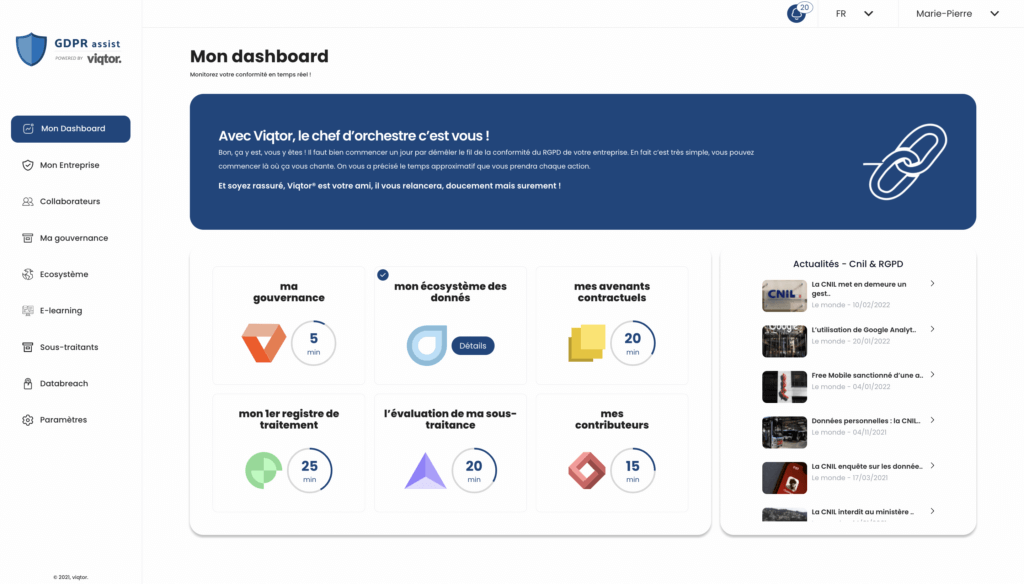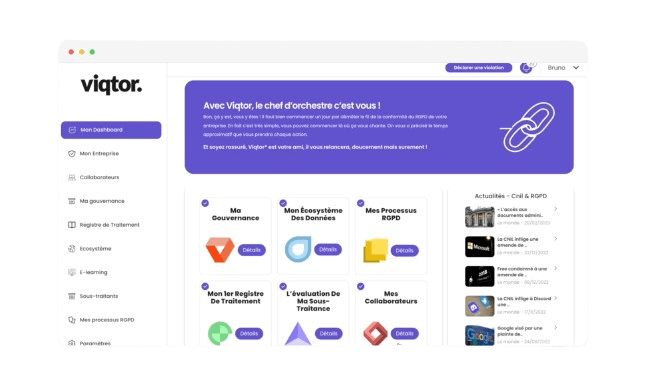The General Data Protection Regulation (GDPR) is a legal framework that requires businesses and organizations to ensure the protection of the personal data of European Union citizens. Conducting a GDPR compliance audit is an essential step in ensuring your business meets these legal obligations.
In this guide, we will explore the key steps of a GDPR compliance audit, common mistakes to avoid, as well as practical advice to ensure effective compliance.
What is a GDPR compliance audit?
A GDPR compliance audit is an assessment process to identify gaps between an organization's current practices and GDPR requirements. It aims to:
- Analyze the processing of personal data.
- Identify data protection risks.
- Implement corrective measures to ensure compliance.
The audit can be carried out internally by a DPO (data protection officer) or a specialized external expert.
2. Steps of a GDPR compliance audit
Identification of data processing
- List all personal data collected, stored and processed.
- Determine the legal bases for these treatments (consent, legal obligation, contractual performance, etc.).
- Check the purposes for which the data is used.
Verification of legal bases
- Ensure that each data processing is based on a valid legal basis.
- Ensure that user consent is collected explicitly when required.
Analysis of human rights
- Check whether the persons concerned can easily exercise their rights (access, rectification, deletion, portability, etc.).
- Make sure your privacy policy is clear and accessible.
Data security
- Evaluate the security measures implemented to protect data (encryption, pseudonymization, access control, etc.).
- Test the robustness of your security protocols to prevent data breaches.
Documentation and compliance
- Maintain an up-to-date data processing register.
- Check that a security incident response plan is in place.
- Ensure that contracts with subcontractors comply with the GDPR.
Awareness and training
- Train your teams in good data protection practices.
- Make sure employees know their GDPR responsibilities.


3. Common mistakes to avoid
- Neglect data processing mapping : poor knowledge of the data collected can lead to non-conformities.
- Forget the subcontractors : make sure all your partners are also GDPR compliant.
- Failure to keep the treatment register up to date : an obsolete register can cause sanctions in the event of an inspection.
- Lack of transparency with users : An incomplete or difficult-to-understand privacy policy can be problematic.
- Ignore security measures : a lack of data protection can lead to violations and penalties.
4. Practical tips for ensuring effective compliance
- Use a dedicated tool like Viqtor® : a GDPR platform allows you to automate auditing and monitor compliance in real time.
- Put an action plan in place : correct the deviations identified during the audit by prioritizing the most critical risks.
- Perform regular audits : GDPR compliance is not a fixed state, but an ongoing process.
- Raise awareness and involve your teams : employee training is key to avoiding human errors.
- Anticipate regulatory changes : GDPR is evolving, and your business needs to constantly adapt.
A GDPR compliance audit is an essential step to ensure the protection of personal data and avoid sanctions. Thanks to a GDPR platform With a specialist like Viqtor®, you can simplify this process and ensure optimal monitoring of your compliance.
Need personalized support for your GDPR audit ? Contact Viqtor® now to benefit from a tailor-made solution.
Download the complete guide for free:
